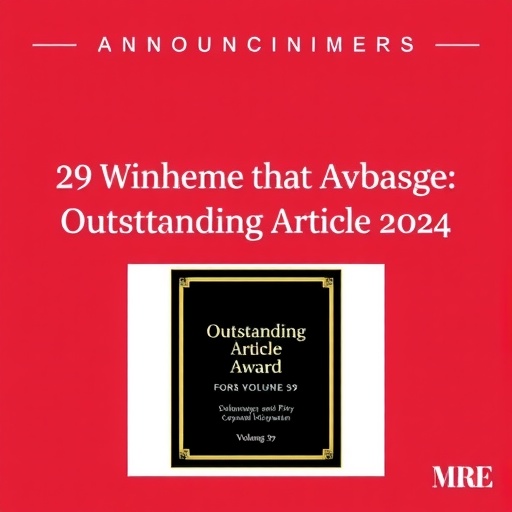In a groundbreaking development in fisheries economics, the journal Marine Resource Economics has honored researchers Y. Allen Chen and Alan C. Haynie with the 2024 Outstanding Article Award for their innovative contribution to understanding size-targeting behaviors in the Bering Sea pollock fishery. Their article, “Size-Targeting in the Bering Sea Pollock Catcher/Processor Fishery with Heterogeneous Incentives,” sheds new light on the nuanced economic incentives that drive fishing vessel operators to preferentially catch pollock of specific sizes, a factor critically influencing both fishery management and conservation outcomes.
The study delves deeply into the heterogeneous incentives among vessels in this significant fishery, recognizing that not all participants in the fleet respond uniformly to the size distribution of the catch. Chen and Haynie’s approach combines empirical revenue models with advanced clustering techniques to categorize vessels according to how strongly their revenues are influenced by fish size. This nuanced segmentation enables a more precise examination of targeted fishing strategies, revealing a diversity of behavioral responses that had previously remained obscured in aggregate analyses.
By embedding these vessel categories within an age-structured bioeconomic model, their research moves beyond descriptive statistics to forecast how size-based targeting may affect key outcomes such as catch volume, stock biomass, and economic returns. This modeling framework integrates ecological and economic data, reflecting the complex feedback loops inherent in fisheries systems where biological growth and market incentives interact dynamically over time. The implications for management policy are profound, as size-targeting strategies can be optimized not only for immediate economic profit but also for long-term sustainability of the pollock stock.
One of the most striking findings of the study is that size-based management measures hold particular promise during periods of low pollock abundance. In such lean years, selectively targeting certain size classes can help to stabilize harvest quantities and reduce the fluctuations in revenue that fishing operators typically experience. This adaptive management insight provides a compelling argument for policies that incorporate vessel heterogeneity rather than assuming a uniform fleet response, which can obscure critical differences in incentives and outcomes.
The analysis further demonstrates that imposing size-based harvest regulations potentially leads to better biological and economic results simultaneously—a dual benefit that is often elusive in natural resource management. By contrast, conventional management approaches that overlook size heterogeneity risk inefficiencies and unintended consequences, such as depleted biomass or revenue volatility, thereby endangering both ecological stocks and economic resilience.
Sunny Jardine, Editor-in-Chief of Marine Resource Economics, emphasizes the significance of this contribution, highlighting how the study introduces a valuable conceptual framework. By explicitly grouping vessels based on revenue sensitivity to fish size, the authors provide a powerful tool for assessing the heterogeneous effects of harvesting strategies. Jardine notes that this framework could be extended beyond the Bering Sea pollock fishery to other fisheries, enhancing the rigor and applicability of economic analyses in resource management globally.
The study’s methodological innovation lies in the integration of sophisticated clustering algorithms with revenue modeling, enabling researchers to discern patterns previously concealed within the noise of aggregate data. This approach recognizes that fishing fleets are not monolithic; rather, they consist of vessels with varying operational strategies, market targets, and biological impacts. Accounting for this heterogeneity allows for more precise policy prescriptions that can reconcile economic objectives with conservation imperatives.
Chen and Haynie’s findings also contribute to the broader theoretical discourse concerning common pool resource use. The demonstrated diversity in value degradation pathways within a shared fishery highlights the limitations of one-size-fits-all management frameworks and underscores the necessity of incorporating behavioral complexity into bioeconomic assessments. This aligns with a growing consensus in the fisheries literature acknowledging the critical role of stakeholder heterogeneity in shaping resource outcomes.
From a policy perspective, the study suggests that regulatory bodies in charge of the Bering Sea pollock fishery could harness size-based management as a lever to balance economic performance and stock sustainability. By tailoring regulations to vessel-specific incentives, managers might reduce ecological risks and economic uncertainty simultaneously, fostering a more resilient fishing sector amid fluctuating environmental conditions and market demands.
Furthermore, the paper’s use of an age-structured bioeconomic model represents a methodological advancement that captures the biological dynamics of fish populations with a level of detail necessary for precise economic evaluation. This alignment of biological reality with economic behavior marks a significant step forward in fisheries modeling, advancing both disciplines through interdisciplinary integration.
The recognition awarded to Chen and Haynie underlines Marine Resource Economics‘ commitment to fostering innovative and practical research essential to addressing pressing oceanic and coastal resource challenges. Their study exemplifies how rigorous empirical analysis coupled with creative modeling can yield insights with tangible implications for real-world marine policy and management.
In conclusion, this award-winning work not only enriches the academic discourse but also offers actionable guidance for fisheries management agencies worldwide. By embracing the complexity of vessel incentives and fishery dynamics, policymakers can design more nuanced regulations that ensure the long-term viability of marine resources while supporting the economic welfare of fishing communities.
Subject of Research: The economic incentives and size-targeting behavior in the Bering Sea pollock fishery with vessel heterogeneity.
Article Title: Size-Targeting in the Bering Sea Pollock Catcher/Processor Fishery with Heterogeneous Incentives
News Publication Date: 2024
Web References: https://www.journals.uchicago.edu/doi/10.1086/731760
Keywords: Marine resources, economics, fisheries economics, bioeconomic modeling, size-targeting, common pool fisheries, resource management, heterogeneous incentives




